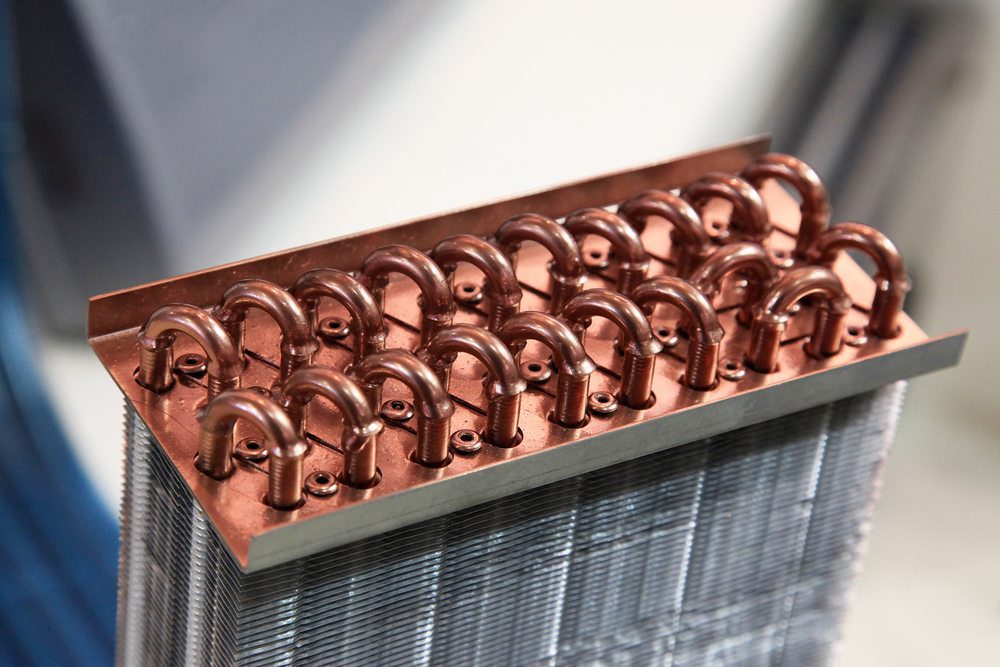Heat trade is a basic course of in lots of industrial and everyday functions, taking half in a critical position in varied techniques similar to energy plants, refrigeration models, and HVAC methods. Understanding the completely different heat change strategies is crucial for optimizing power efficiency, improving performance, and decreasing prices.
Conduction
Conduction is the switch of warmth by way of direct contact between solids or stationary fluids. In this methodology, thermal energy flows from regions of higher temperature to regions of lower temperature. The price of warmth transfer is influenced by elements such because the temperature gradient, material properties, and floor space.
Common examples of conduction warmth switch embrace cooking on a stovetop, the place heat is transferred from the burner to the pot, and the cooling of electronic devices using heat sinks.
Convection
Convection includes the transfer of heat through the movement of fluids (liquids or gases). It occurs as a outcome of differences in density brought on by temperature variations within the fluid. The two forms of convection are natural convection and compelled convection.
Natural convection relies on buoyancy forces attributable to temperature gradients. As a fluid’s temperature will increase, it turns into much less dense and rises, whereas cooler fluid descends. This circulation creates a steady move that transfers warmth. Examples embrace boiling water and air currents in a room.
Forced convection, on the other hand, utilizes external forces like pumps or followers to enhance fluid movement. By increasing the flow price, compelled convection enhances warmth transfer charges. This methodology is usually employed in automotive radiators, air con techniques, and various industrial processes.
Radiation
Radiation is the transfer of heat via electromagnetic waves, with out the necessity for a medium or direct contact. Unlike conduction and convection, radiation can happen in a vacuum. All objects with a temperature above absolute zero emit electromagnetic waves, with the depth depending on their temperature and surface properties.
Radiation heat switch is liable for various pure phenomena, such because the solar’s warmth reaching the Earth. Additionally, it plays a vital position in quite a few industrial purposes, together with thermal energy era, photo voltaic panels, and infrared heating methods.
Heat Exchangers
Heat exchangers are devices designed to facilitate efficient heat transfer between two fluids at different temperatures. They microchannel heat exchanger maximize heat exchange by providing large surface areas for contact, reducing temperature gradients, and minimizing losses.
There are several types of heat exchangers, together with shell-and-tube, plate, and finned tube. Each sort provides distinctive advantages and is suitable for particular purposes.
Shell-and-tube heat exchangers include a bundle of tubes enclosed within a shell. One fluid flows by way of the tubes (the tube side), whereas the opposite circulates round them inside the shell (the shell side). This design permits excessive warmth transfer effectivity, making them extensively utilized in industries such as chemical processing and power era.
Plate heat exchangers make the most of thin metallic plates stacked together, creating alternating channels for each fluid. This compact design supplies a big floor space for warmth switch and is frequently employed in HVAC techniques, refrigeration units, and food processing industries.
Finned tube warmth exchangers combine the options of both shell-and-tube and plate exchangers. By adding fins to the outer floor of the tubes, the warmth switch area is considerably elevated. These exchangers are generally utilized in air con systems, warmth recovery applications, and oil coolers.
In conclusion, exploring warmth change strategies is crucial for optimizing energy usage and maximizing performance in varied applications. Conduction, convection, and radiation are the primary mechanisms of warmth transfer, each with its distinct characteristics. Understanding these rules and utilizing appropriate warmth exchangers can tremendously improve effectivity and scale back prices in industrial processes and on an everyday basis systems.







